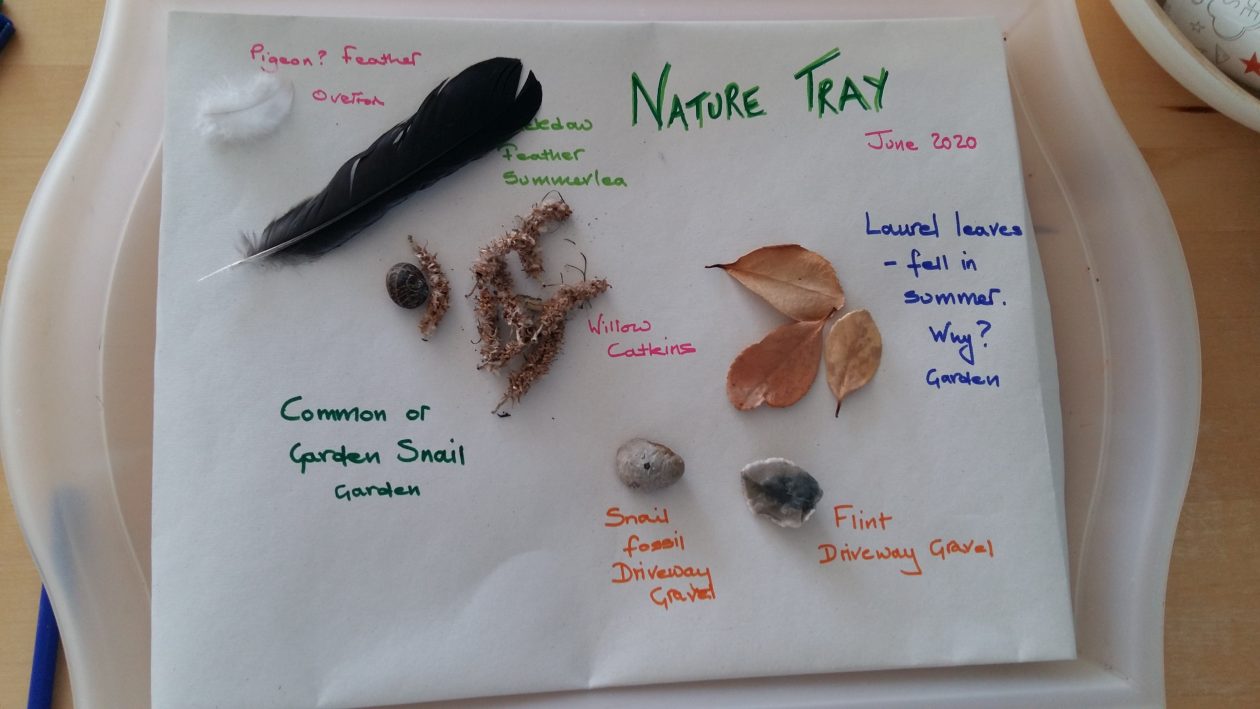CfE Es and Os Writing LIT 1- 25 a and LIT 2- 25a and LIT 1-20a and LIT 2-20a
Notebook number 2 has been completed – for information on Notebook number 1 see 30 Days Wild Notebook We will take a look at some of the ‘random acts of wildness’ and make some links to websites with ideas for you to try and perhaps some extension activities.
A short video lets you take a look at the new notebook
Make a nature table
A nature table is just a collection of interesting wild things (no longer living!) displayed together on a table top or (as we did for our nature table) on a tray.
If you can find a large piece of paper (we used the back of some left over wallpaper) place your wild finds on top and write any labels directly on to the paper. Your labels might be just simple name tags for your objects but you can also add short notes about anything else you have discovered about your find.
shows you some ideas for how to display your collection and share with friends and classmates.
Once you have finished with your finds put them back as close as possible to where you found them Some special finds you may want to keep – like the fossil we found.
Take a walk on the Wild Side
This is an idea suggested by Wildlife Trusts – 30 Days Wild Ideas
Take off your socks and shoes and take a walk! Choose somewhere safe to walk, and find out what the world feels like under your bare feet.
In our notebook we drew a bare foot and surrounded the drawing with words to describe what the ground felt like – gritty, hard, warm, prickly, damp – as we walked around the garden. Keep your notebook and use your adjective collection to make a new piece of writing interesting and exciting for your readers.
Make a difference – make a hedgehog feeding station
This is a favourite activity ! To find out how to make your own hedgehog feeding station go to The Owl Who Was Afraid of the Dark – Social Studies Activities .
Colours
Take a look what is around you – but this time focus on the colours and don’t worry about objects and shapes.
We took out a tiny paint set and an old plate so we could mix the few colours we had. We were on the look out for interesting colours in our outdoor space and concentrated on mixing the paint to match the colours we could see. In theory, you need only yellow red and blue (the primary colours) and white to mix colours you are likely to need.
Cloud spotting
Another favourite activity – this time one you can approach in 2 ways:
study the clouds looking for the shapes and pictures they form Cloud Gazing and Mindfulness
or
work out the scientific name for your cloud following the Met Office – Cloud Spotting Guide.
We tried both!


